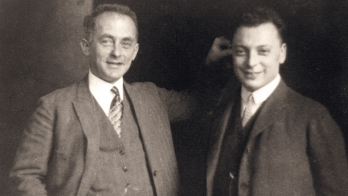By David Kaiser
W W Norton & Company
Hardback: £17.99 $26.95
Paperback: $17.95

In this curious book, David Kaiser presents a detailed “biography” of a group of young physicists, the “Fundamental Fysics Group”, based in Berkeley, California, and their unconventional impact on the development of “the new quantum age”. Most of the action takes place in the 1970s and includes a surprising mixture of characters and plots, as suitably summarized in these illuminating words: “Many of the ideas that now occupy the core of quantum information science once found their home amid an anything-goes counterculture frenzy, a mishmash of spoon-bending psychics, Eastern mysticism, LSD trips, CIA spooks chasing mind-reading dreams and comparable ‘Age of Aquarius’ enthusiasms.” These people regularly gathered to discuss all sorts of exotic topics, including telepathy and “remote viewing”, as well as faster-than-light communication and the fundamental concepts of quantum theory.
Among many other things, I liked learning about early discussions regarding Bell’s theorem, the Einstein-Podolsky-Rosen paradox and the nature of reality, sometimes taking place in workshops with sessions in hot baths, interspersed by drum playing and yoga exercises. I also enjoyed reading about the first experimental tests of Bell’s work by John Clauser and about the genesis of the bestseller The Tao of Physics, by Fritjof Capra. It was particularly interesting to learn about a paper on superluminal communication (published despite negative reports from referees), which triggered the development of rebuttal arguments that ended up being quite revolutionary and leading to quantum encryption etc. It was thinking outside the “establishment” way that led to a wrong but fruitful idea about implications of Bell’s theorem, which forced others to improve the understanding of quantum entanglement and gave rise to a new and highly successful branch of physics: quantum information. Kaiser’s basic message is that, sometimes, crazy ideas push the understanding of science beyond the frontiers set by people working in conventional environments, within universities, and by government grants.
I know that we should not judge a book by its cover but with such a title I expected this book to be an interesting summertime read and was surprised to find that it is written in a rather heavy style that is more suitable for historians of science than for physicists relaxing on the beach. The topic of the book is actually quite curious, the language is fluid and the narrative is well presented but the level of detail is such that many readers will often feel like jumping ahead. It is elucidating to note that almost 25% of the book’s 400 pages are devoted to listings of notes and of bibliography. Essentially every sentence, every paragraph, is justified by an “end note”, which is an overkill for a book targeting a general audience. Writing this dense book must have been a long-term job for Kaiser, who is both a physicist and a historian. The result does not really qualify as an easy read. I enjoy reading biographies if they have a nice rhythm, some suspense and a few anecdotes here and there – which is not exactly the case for this book. I wonder how many readers end up moving it aside after realizing that they have been misled by the spirited title?








